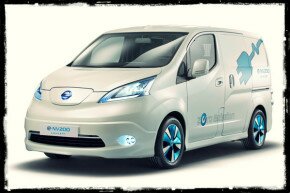Toyota Yaris Hybrid 2013
 |
The new 2013 Toyota Yaris Hybrid vehicle represents a new and unique offer in Europe’s highest sales volume segment, and will bring the benefits of full hybrid technology to a wider range of customers than ever before. With low fuel consumption, low environmental impact, strong acceleration, great manoeuvrability and unique EV capabilities, it represents the ultimate urban car.
Despite the extra input of a 60bhp electric motor which can boost, or take over from, the Yaris’s 72bhp 1497cc petrol engine when conditions allow, the 2013 Toyota Yaris Hybrid is designed for sensible transport, not performance motoring. Even though there is good zip off the line the Yaris isn’t a car where you want to suddenly accelerate for a gap. Maximum power allowed by the electronics is 98bhp which can deliver 0-62mph in 11.8 seconds and a top speed of 103mph. Selecting eco mode is a waste of time as the power disappears, along with virtually any acceleration, to be replaced by noise. Keep the revs down and life is more pleasant for all concerned. The Yaris is happy enough at motorway speeds, though accelerating up an incline produces the usual annoying CVT gearbox whine as the engine revs increase and the gearbox rushes to catch up.
Handling is not what you buy this car for, though it’s safe enough and not irritating. Compared to a standard Yaris, the hybrid version feels more big car-like and heavier, and also more refined. At low speeds round town you don’t notice the extra weight of the low mounted battery pack unless you attack a corner with verve. Despite light steering you have a pretty good idea of the grip of the front tyres when cornering. The biggest weakness in the Yaris’s dynamic abilities is a total lack of any sporty feel for drivers to whom that matters.
Bit tastier than the standard new Yaris, this petrol-electric hybrid version is still instantly recognisable as a Yaris as the differences are subtle, but the need to provide extra cooling for the electrical systems means a bigger ‘radiator’ grille and a reshaped bumper which almost gives the car a sportier GTI look. Actual people space in the Yaris is not changed despite squeezing in the electric batteries, electric motor and control equipment. The Japanese are good at miniaturising stuff so the 286 litre boot capacity is not affected. Toyota says the Hybrid is just 20mm longer, all in the front overhang. It is now 3,905mm long and 1,695mm wide.

Front seats okay, but some passengers didn’t find enough support in the back ones. Instruments and clear and simple with additional features on the centre display screen. It does the usual hybrid trick of showing where the power you are using is coming from (petrol or electric) and how effectively, or not, you are recharging the batteries. You can also call up graphs of fuel consumption over different time periods, which is both interesting and constructive.
Best results achieved just leaving the Yaris in normal mode, where it is always very easy to drive. Transmission selector lever works but looks toy car. Some cheap trim in the cabin and cheap/flimsy material in the boot.
The Yaris’s official combined fuel figure of 80.7mpg is dream world stuff. Give and take motorway travel saw 50.4mpg, improving to 57.7mpg on low traffic ‘cruisey’ roads. With real care I managed 64.7mpg on a mixed route, while a 14 miles urban commute, including slow roads in heavy traffic, achieved the best of 70.3mpg for an average speed of 24mph. Equipment and wheel size on T Spirit model increases carbon dioxide emissions from 79 to 85g/km which is still below the level at which road tax and the London ‘congestion charge’ currently applies. Warranty is five years/ 100,000 miles.
CO2 emissions of 79g/km (85g/km for the top T Spirit version) are low enough to save you road tax and up with the best diesels while petrol is arguably the ‘cleaner’ fuel. In theory you can stay electric below 30mph but I never managed to achieve this, even with the power distribution display showing on the centre console screen for guidance. A modified exhaust system improves catalyst warm-up time by 24%. An exhaust gas recirculation system re-introduces cooled exhaust gases into the intake system to reduce engine operating temperatures. An electric water pump and small, multi-functional radiator improve engine warm up speed.
The Hybrid’s cabin is identical to the conventionally powered Yaris apart from a slightly different instrument display. T3 models ride on 15 inch diameter wheels with aerodynamic covers but you get 15 or 16 inch alloy wheels on T4 and the top T Spirit models. The touch system on the centre console (again on T4 and T Spirit models) includes a blue-lit hybrid energy monitor. T3 trim includes dual zone air-conditioning, front electric windows, six-speaker stereo, anti-lock brakes with brake assist and vehicle stable control with traction control. T4 and above have rear parking camera. T Spirit versions have part leather upholstery.
















Yaris hybrid was yesterday,
want a Yaris plugin,
today !
Jetzt, im Juni 2013,
ist der Yaris Hybrid schon Schnee von gestern,
wo bleibt der Yaris Hybrid Plugin ??